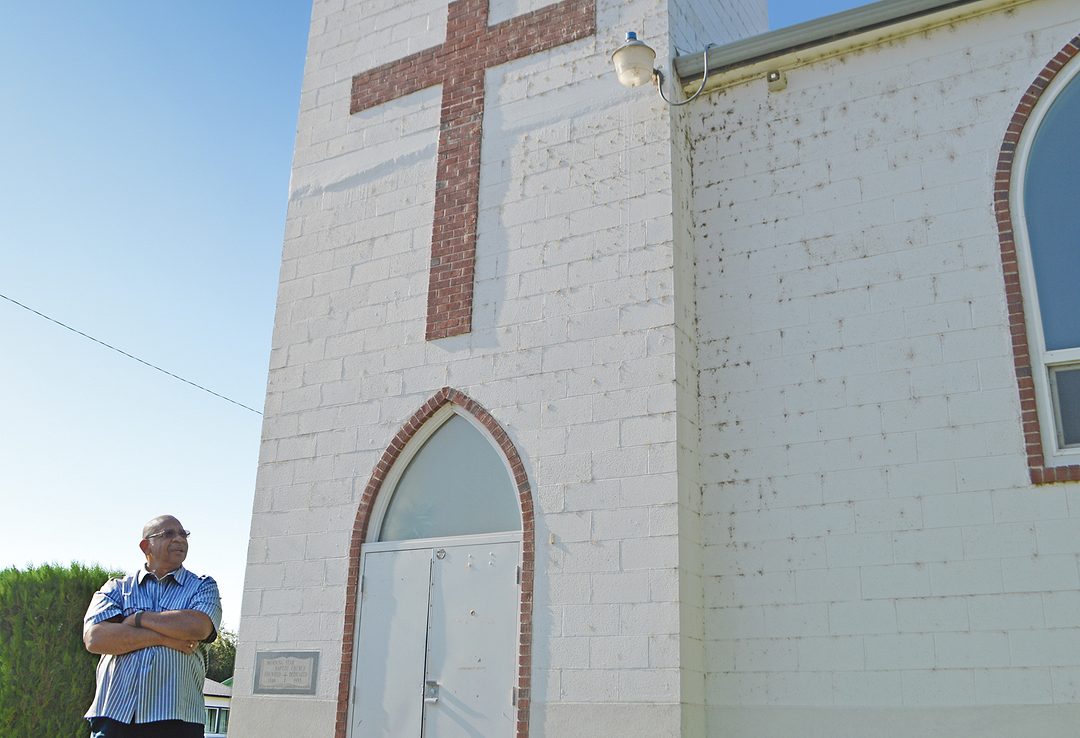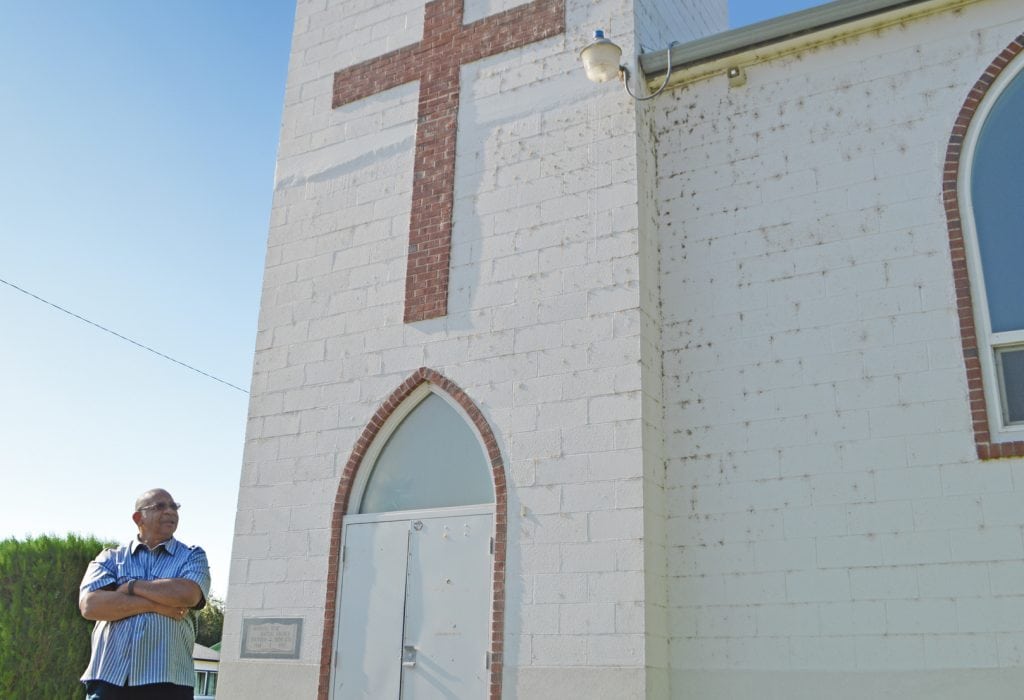
Home » Pasco works to identify historic African American sites
Pasco works to identify historic African American sites

August 14, 2018
The city of Pasco is working quickly to identify historic African American buildings and locations of significance in the community before they’re lost to city growth.
“It just seemed like it was prime time, if you will, to capitalize on this opportunity and preserve the history of this community,” said Tanya Bowers, project manager for the historical property survey.
She helped write the federal and state grant proposals to document historic properties in the community. Since receiving about $30,000 in grants, the city hired a Portland-based firm with an archeologist, who is narrowing down the list of historic sites to be considered for nomination.
The working list includes spots like Morningstar Baptist Church in east Pasco, which was the first African American church in the city.
“Morningstar was the center of the community,” said Pastor Albert Wilkins, who has been a member of the congregation for 65 of his 67 years and is the fifth pastor of the church. “During the whole civil rights movement, the church was where folks met and strategies were formed,” he said.
Since then, the makeup of the city and neighborhood has changed.
“There was a time when the majority of African Americans in the Tri-Cities lived here (east Pasco). As you look around this neighborhood now, it’s 95 to 97 percent Hispanic. When I grew up, it was 95 to 97 percent African-American,” Wilkins said.
The segregation was not by the community’s choice, as ordinances forced African Americans to live primarily in east Pasco.

“The community was isolated and wasn’t necessarily welcomed at businesses west of the train tracks,” Bowers said.
Wilkins said, “I must have been 6 years old before I saw a white man. We were cut off and isolated here.”
These memories and histories are part of what the research team will work to document over the remainder of the year by visiting the community and hearing their stories.
The effort includes Dana Holschuh, an archeologist with Harris Environmental Group Inc., or HEG, the Portland natural and cultural resource firm hired by the city to complete the property survey.
Holschuh then will document properties with the state and include a statement of their significance.
“What we’re mostly looking for is a location’s information potential. What did this building mean to the community and really digging into why it should be preserved at a national level,” Holschuh said.
A community meeting, hosted by HEG and facilitated by Bowers in late June, solicited additional suggestions on possible locations with historic significance to the African American community. About 15 people attended.
“They were very expressive and excited about the process,” Holschuh said.
Bowers said she hopes even more people will join in the effort.
“It’d be wonderful, in the spirit of crowdsourcing, to have people contribute their stories. It’s critical we get this history recorded now since original migrants are no longer with us, so that this history can be recognized and preserved,” she said.
Not only are the memories disappearing, but some storefronts, restaurants or vacant lots are no longer around, having been removed during the urban renewal process in the 1980s.
Bowers said she feels that the community looks at these decisions not with regret, but with ambivalence for what’s no longer there. But other locations, like Morningstar Baptist, have had a continuous presence in the community to this day.
Kurtzman Park is just blocks away from Morningstar and also has been named by community members as a location of historical significance. This is why it was chosen as the location to hold the recent meeting with HEG. It wasn’t until the meeting was held at the Kurtzman Park police sub-station that researchers realized the meeting site also had historical significance, having once served as a community center.
“The consultant was able to hear people reflect on places that have meaning to them, many of which are not currently standing, some of which still are, and that was really powerful,” Bowers said. “These places matter to us.”
Bowers, also a member of the African American Community Cultural and Educational Society or AACCES, believes the stories of African Americans aren’t being re-told and could be lost to time.
She said 6,000 African Americans were part of the construction work done at Hanford in the early years, yet their contribution was only mentioned twice in Hanford tours offered today. Bowers believes at least 30 stories from African Americans who worked at the site during its construction have recently been captured as part of the Hanford History Project’s documentation of oral histories.
The historical preservation process has three phases, beginning with the survey of properties. The survey is expected to take through the end of the year, with a goal of establishing a site’s historical significance. The second phase includes context, which demonstrates how researchers established the historical significance, and then the final phase is nomination of sites that may be included on the historical registry.
To be included on the registry, a location must be at least 50 years old and have a moderate to high level of integrity of its original exterior. For buildings and homes, the interior may have been remodeled if the exterior is intact.
“We’re mostly interested in context versus architecture,” Holschuh said.
Since it covers the past 50 years and the grant process could take up to two years, it’s possible properties dating back to 1970 could be included. The state grant Pasco received covers only the survey portion, while the federal grant covers all three phases.
Bowers and Holschuh expect up to 10 sites will be included in the completed formal survey and undergo intensive research, with an expectation that at least two of those properties would be nominated through the federal grant.
Researchers also are benefiting from sites that have been previously documented as historical, thanks to work done by students at Washington State University Tri-Cities for the East Pasco Mapping Project. It’s currently a blueprint for a future application that could provide a virtual tour of Pasco to view what happened on a particular site throughout history.
“Right now we have the African American story in east Pasco, but in another 20 years, the Latino story is going to be significant, according to this 50-year rule,” Bowers said. “So we have to create a placeholder to realize history is always being created, but we also want to record this before it’s lost.”
Besides acknowledging historical significance, the registry could make properties eligible for historical tax credits if they are renovated according to standards set up by the Department of the Interior. Bowers also sees the opportunity for community empowerment and economic development through heritage tourism.
The second phase of the grant process is expected to go out for bid in 2019 and will include details on how the historical significance was determined. The research team welcomes more community involvement in this effort.
“I’ve learned so much more about the story of this population,” Bowers said.
Local News Diversity
KEYWORDS august 2018





